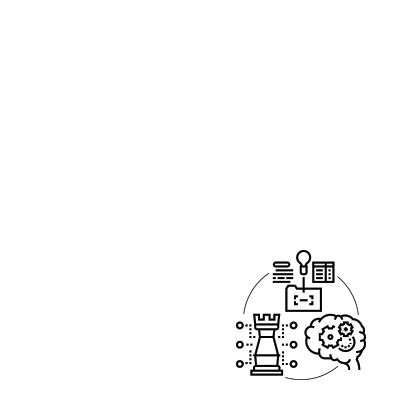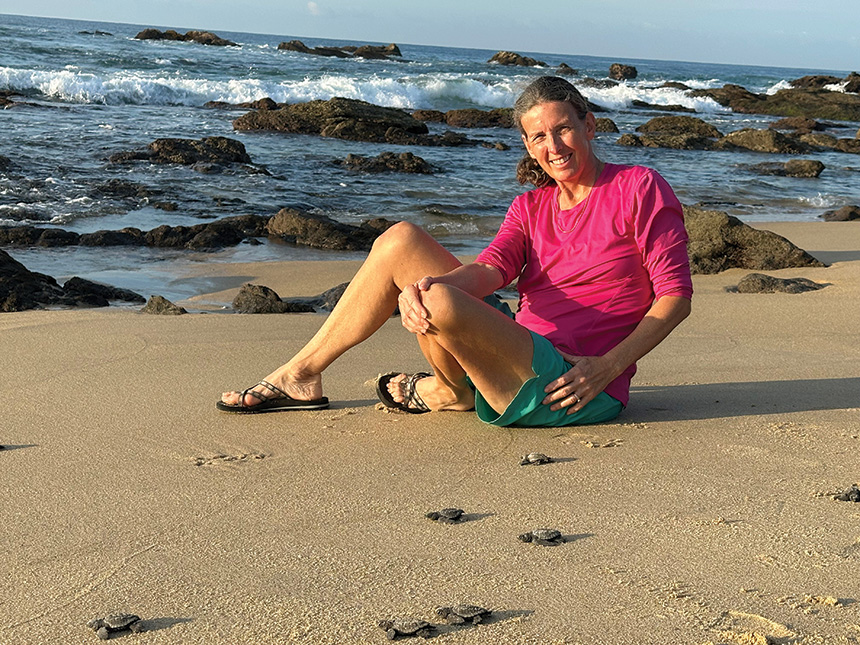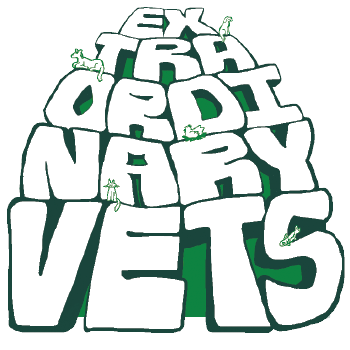

Assistant professor Donna Harris, DVM, MBA, MS, is preparing the next generation of veterinary professionals in a way that differs somewhat from other faculty members at the College of Veterinary Medicine. Instead of anatomy, junior surgery, or veterinary sciences, she leads the courses in career development, practice management, and other skills that will empower her students to handle all the aspects of their careers beyond the clinic floor.
Outside of the classroom, her work centers on a field that is only just emerging in the veterinary profession: futures studies and strategic foresight. Practitioners in this field are called “futurists,” and currently, Harris is one of just two veterinary futurists in the country.
“I am a big picture thinker,” she says. This mindset has always factored into her career—she spent 15 years after earning her DVM degree from Michigan State in small animal and exotics practice—but began to crystallize in 2004 when she earned an MBA from Grand Valley State University and began conducting economic research with James Lloyd, DVM, PhD. At the time, Lloyd was a faculty member at the MSU College of Veterinary Medicine, where he also held administrative leadership roles, and he taught practice management courses that Harris helped support. At the time, Lloyd taught practice management courses, and Harris began to help.
“He was instrumental in guiding me through the process of economic research and teaching,” she says. Their work grew in significance during this time, as the American Association of Veterinary Medical Colleges began to emphasize the placement of non-technical professional skills in curricula—skills like personal finance, practice management, and professionalism. This trend caused her responsibilities to grow, and the material she taught expanded. In 2014, she officially became faculty at the College.

A futurist looks at weak trends and whispers of change. What’s going on today that, if they grow into bigger trends and drivers of change, would affect us? And how?


“I was interested in understanding how strategy works,” she explains. “As I started exploring how I could learn more about strategy, I stumbled upon this amazing master’s program.”
The program, a master of science degree in foresight offered by the University of Houston, trains its students “in the core principles, methods, and frameworks that are used to not just map the future, but to advance it.”
What does this field entail? In a word: forecasting. Futurists conduct research and develop projects that explore future possibilities that could occur for any given industry, and how organizations within the industry can prepare for these potential futures.
“So, for example, if you think about what you want your life to look like in ten years, you should sit down and envision it in as much detail as you can,” she explains. “In order to create that desired future, you would make certain decisions today to achieve that.”
According to Harris, there are plenty of ways this form of thinking can benefit the veterinary profession. “Many of the things we face in veterinary medicine have happened to us—not because of something we do,” Harris explains. “And so, understanding the possibilities of what could happen should shape how we react today.”
She points to a concrete example.
“We didn’t decide that for ourselves; we reacted. If we pay attention to these kinds of potentials for us, we can make better decisions today. As veterinarians, we’re problem solvers. We solve problems on the plate today; ‘how can I help this patient in my room right now?’ But we need to think about the future.”
What does the future hold, then?
“The futurist is not a predictor,” Harris says. “A futurist looks at weak trends and whispers of change. What’s going on today that, if they grow into bigger trends and drivers of change, would affect us? And how?”
Trends in veterinary medicine are wide-ranging, from labor practices to artificial intelligence revolutions. Harris explains the strategic foresight process using just one example.
“We know there’s research into creating injectable or oral medication that could potentially sterilize an animal,” she says. “If that were to come to fruition, we wouldn’t need spay/neuter clinics anymore. That’s a whole segment of the profession out of business. I’m not predicting that will happen, but it’s something we want to know about. How close are we? Is it even possible?”
She and a collaborator, Karen Rosenthal, DVM, MS, of Veterinary Emergency Group (the country’s other veterinary futurist), are investigating the future of veterinary education and the possibilities in 10 to 20 years. Harris broaches the topic with her students, too.
“When we talk about marketing and strategy, we talk about the forces that affect us. How we can pay attention so they don’t surprise us.” She also works one-on-one with students who are particularly engaged with the topic and advises the Veterinary Business Management Association student chapter.
“Veterinary school is very hard,” she says.“And most students focus on learning the medicine and clinical skills, as they should. But if I can help them understand the basic concepts of practice management and maybe inspire some of them to become business owners, then that’s good enough. I don’t expect to give them an MBA knowledge, but I hope I can give them a starting point.”
Other areas her courses cover include loan forgiveness programs, personal finance, salary negotiation, how to ace a job interview, understanding contracts, and other career considerations that will not only prepare them to enter the job market, but to do so confidently.
“Understanding that they can succeed financially makes them a more confident person, and therefore a more confident vet,” she says.
Harris uses the summer for her foresight projects. These projects give her the opportunity to meet veterinarians who work in unconventional areas, which inspired her to launch a podcast: Extraordinary Vets.
“It’s focused on the career pathways of veterinarians who have done extraordinary things or carved out a unique career for themselves,” she explains.
On the podcast, Harris has interviewed the only full-time aquarium veterinarian in the United States, as well as Uganda’s first wildlife veterinarian who founded the NGO Conservation Through Public Health to save mountain gorillas. She has also spoken with a major initiator of the field of veterinary forensics, bridging veterinary medical expertise and law enforcement.
“I want the podcast to inspire students who aren’t certain what they want to do, and veterinarians in the field who are in a specific career path that doesn’t feel right to them,” Harris says.
“Because this profession is unbelievably open to lots of different opportunities.”



Harris also works with C-SNIP, a spay, neuter, and wellness clinic in Grand Rapids, Michigan, where she facilitates a highly popular student externship program. In 2024, Harris received an MSU Outreach and Engagement Award for her
work with the clinic. Her impact extends internationally through the Mazunte Project,
an initiative of the Sea Turtle Conservancy in Oaxaca, Mexico. There, Harris and MSU students perform spay and neuter surgeries in rural communities, helping control dog populations that threaten vulnerable sea turtle nests. This One Health service project protects endangered species, supports community health, and gives students vital surgical experience and a broader global perspective.
